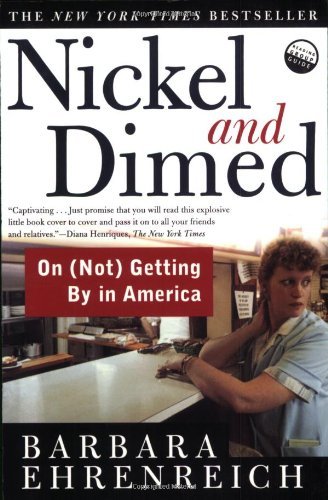Nickel and Dimed Book Summary
On (Not) Getting By in America
TL;DR
In 'Nickel and Dimed,' Barbara Ehrenreich embarks on a revealing journey to uncover the struggles of low-wage workers in America, demonstrating the harsh realities and challenges faced by those earning poverty-level wages.
What is Nickel and Dimed about
'Nickel and Dimed: On (Not) Getting By in America' is a powerful non-fiction narrative where Barbara Ehrenreich immerses herself in the lives of low-wage workers across the United States. Inspired by the rhetoric of welfare reform, Ehrenreich takes on various menial jobs in Florida, Maine, and Minnesota, aiming to understand how individuals can survive on wages far below the poverty line. Her experiences shed light on the exhausting physical and mental demands of low-wage jobs, revealing that achieving financial stability often requires juggling multiple positions. The book serves as a poignant commentary on wealth inequality, the social safety net, and the often-overlooked struggles of the working poor.
Nickel and Dimed 5 Key Takeaways
The Reality of Low-Wage Work
Ehrenreich's experiences showcase the intense physical and emotional labor involved in low-wage jobs, challenging the misconception that such work is easy or unskilled.
Multiple Jobs for Survival
The necessity of holding multiple jobs to make ends meet highlights the unsustainability of living on a single low-wage income, illustrating the systemic issues of poverty.
Wealth Inequality
The book emphasizes the stark contrast between the lives of the working poor and those in wealthier socioeconomic classes, underscoring the deep-rooted economic disparities in America.
Social Safety Net Critique
Ehrenreich critiques the social safety net, arguing that it often fails to support those in low-wage employment, leaving them vulnerable and without adequate resources.
Camaraderie Among Low-Wage Workers
Despite the challenges, Ehrenreich finds moments of solidarity and generosity among low-wage workers, revealing the human spirit's resilience in the face of adversity.
Top Nickel and Dimed Quotes
- 'I had no idea what I was getting into, and I’m not sure I would have undertaken it if I had.'
- 'The only thing that keeps you from falling apart is a kind of stubbornness...'
- 'The working poor are a vast and nameless crowd, without the kind of visibility that would allow them to be seen as individuals.'
Who should read Nickel and Dimed?
This book is ideal for readers interested in social justice, economic inequality, and labor rights. It offers profound insights into the struggles of the working poor, encouraging a deeper understanding of the systemic issues that perpetuate poverty in America.
Nickel and Dimed Best Reviews
- 'Nickel and Dimed' is a powerful social commentary that starkly reveals the harsh truths of low-wage America, blending humor with poignant observation.' - The New York Times
- 'Ehrenreich’s undercover exploration of the working poor is both eye-opening and provocative, challenging readers to reconsider their views on poverty and labor.' - The Washington Post
People also liked these summaries
Nickel and Dimed FAQs
Why is 'Nickel and Dimed' a banned book?
'Nickel and Dimed' was challenged in some districts for allegedly promoting economic fallacies and socialist ideas, as well as for its candid discussions on poverty and drug use. Despite these challenges, it remains widely read and respected.
What is the main point of 'Nickel and Dimed'?
The main point of 'Nickel and Dimed' is to expose the harsh realities of low-wage work in America, revealing the struggles of individuals trying to survive on poverty-level wages and the systemic inequalities they face.
